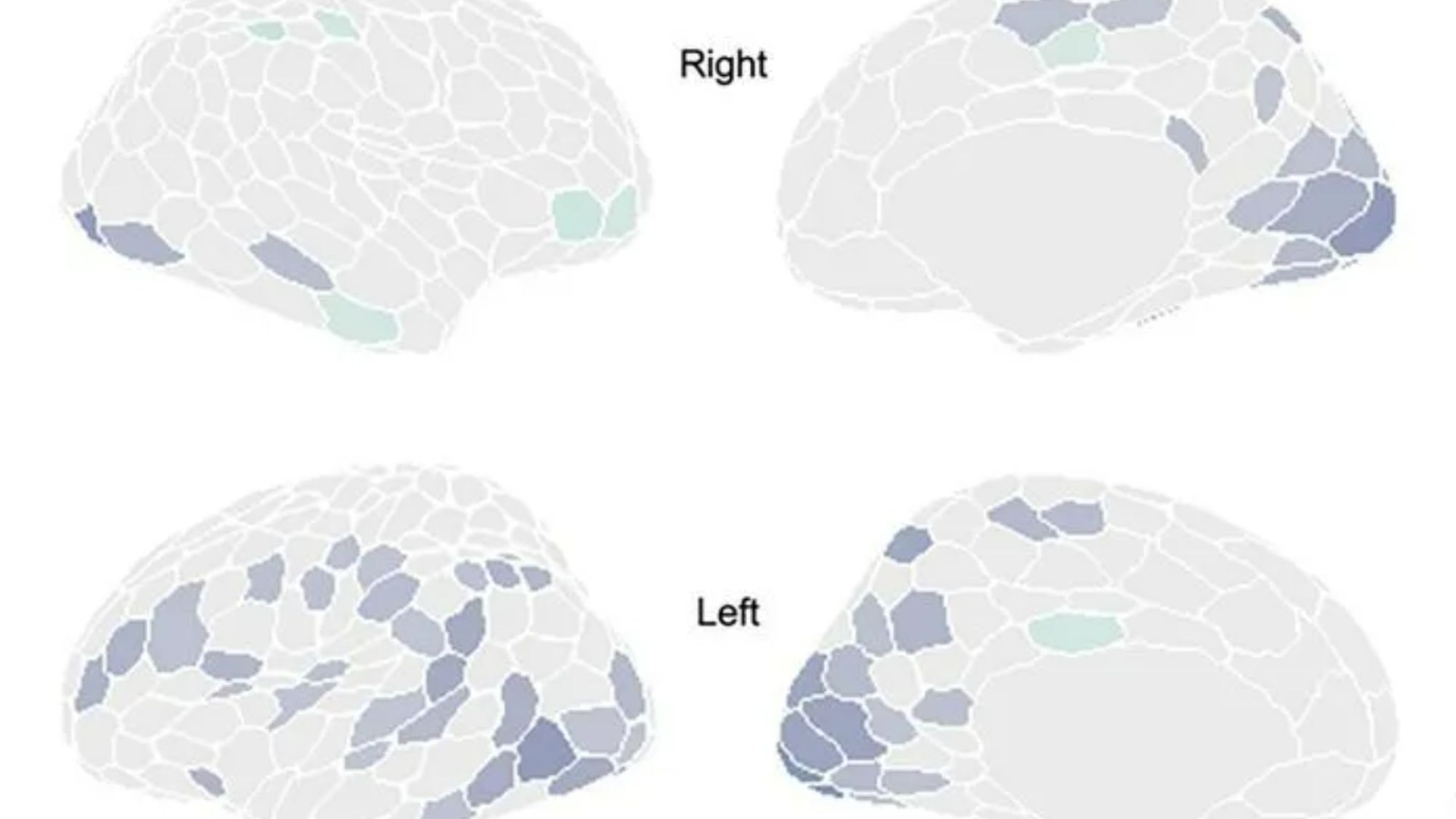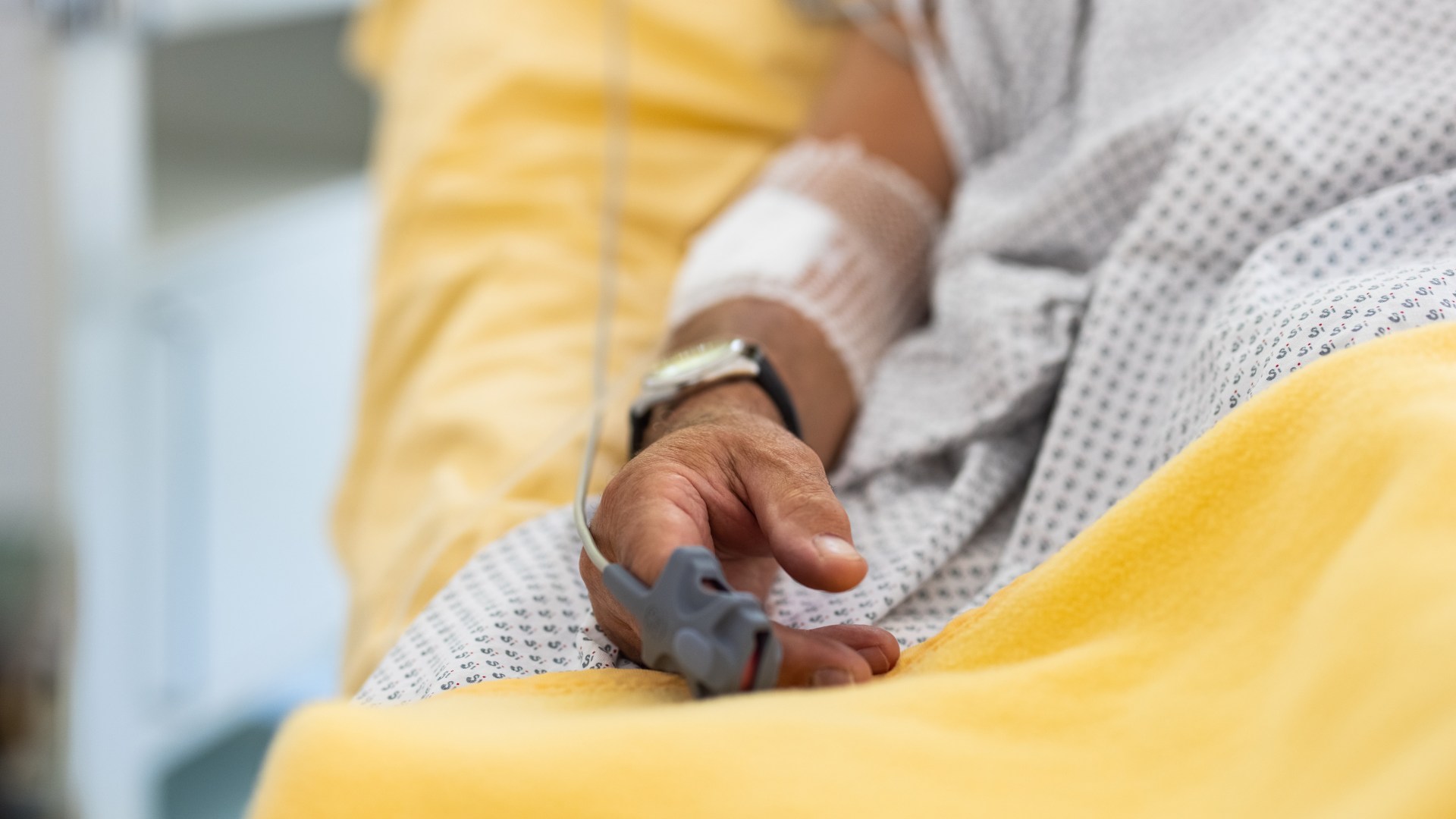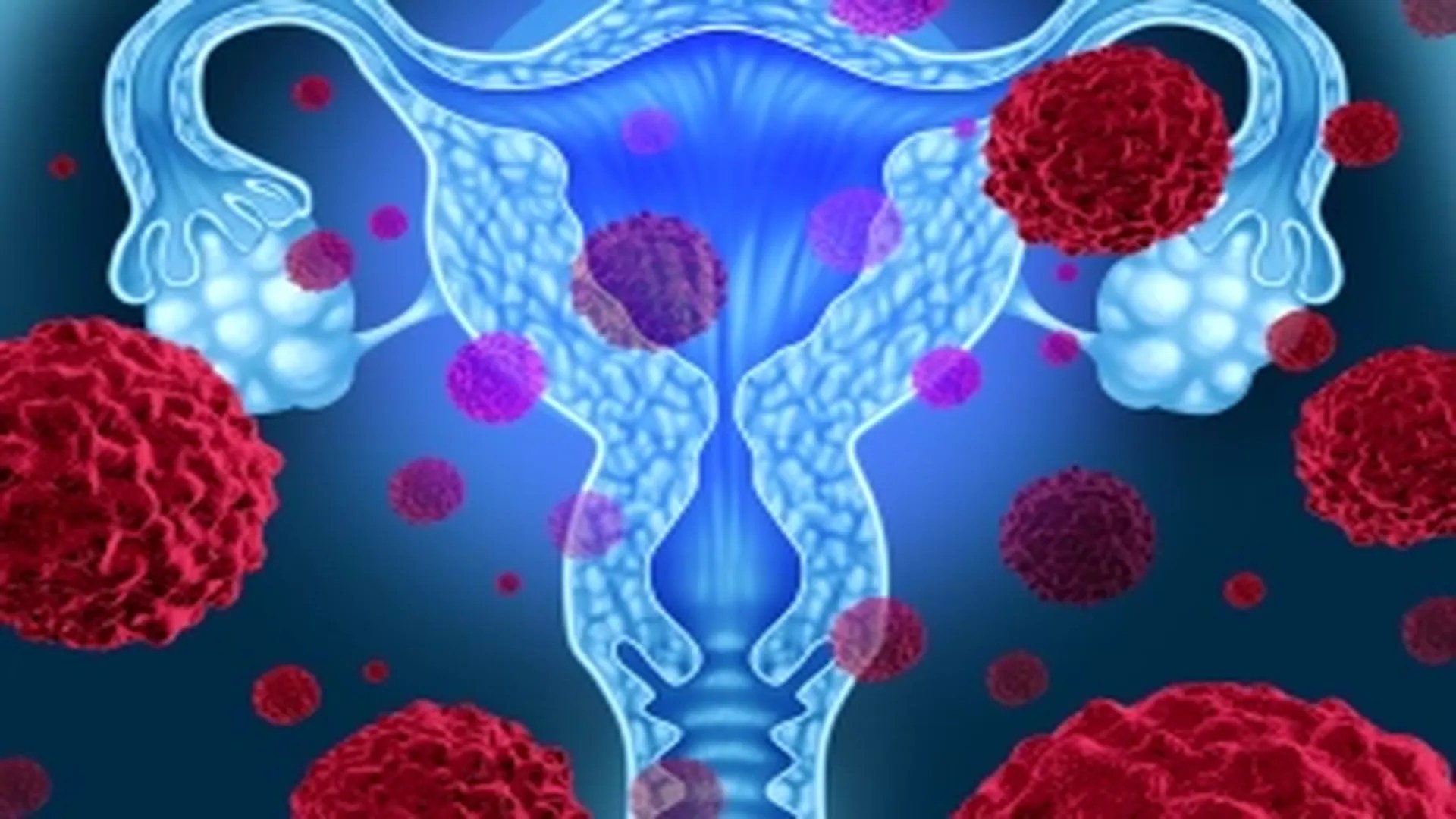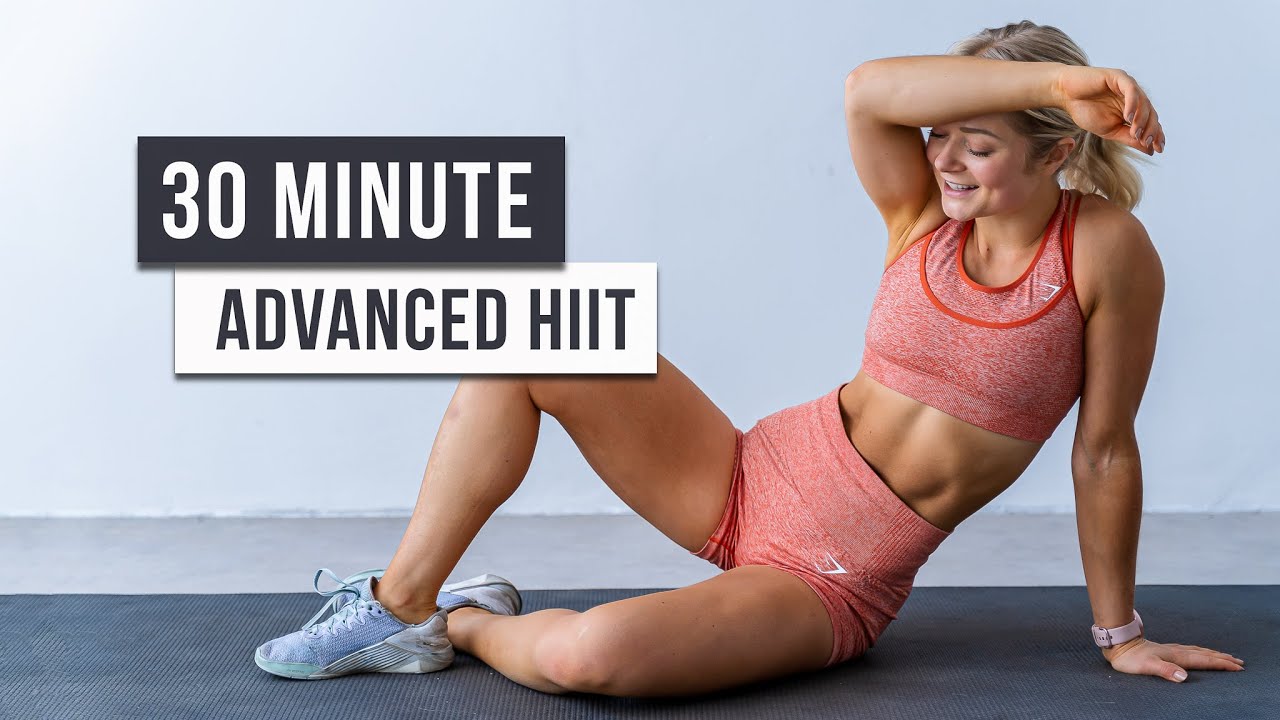Health & fitness
Men’s brains SHRINK by 8pm everyday – before resetting overnight, scientists discover

MEN’S brains shrink in volume by 8pm every day, a study suggests.
Scientists scanned a 26-year-old’s brain 40 times over 30 days and found that after shrinking, the man’s brain reset overnight.
Researchers from the University of California, Santa Barbara, say this cycle of growing and shrinking coincides with rising and falling levels of steroid hormones testosterone, cortisol and estradiol.
Study co-author Laura Pritschet – now a postdoctoral scholar in psychiatry at the University of Pennsylvania Perelman School of Medicine – told Live Science: “Males show this 70 per cent decrease from morning to night in steroid hormones.
“You can think of it almost like a pulsating rhythm from morning to night.”
Women’s hormones also fluctuate daily but it’s not as pronounced because the menstrual cycle simultaneously drives longer-term shifts in hormones, Ms Pritschet said.
The study, published in The Journal of Neuroscience, found that the man’s overall brain volume decreased throughout the day, as did the thickness of the cortex, the brain’s outermost layer.
The volume of grey matter – which plays a significant role in mental functions, memory, emotions and movement – fell by an average of about 0.6 per cent by each night, researchers found.
Two regions of the cortex, the occipital and parietal cortices, shrank the most. These are involved in visual and sensory processing.
Deeper brain structures, such as the the cerebellum, brainstem and parts of the hippocampus, also saw changes throughout the day.
These parts of the brain are involved in coordinating movement, relaying information between the brain and body, and storing memories.
Though changes in brain structure coincided with the daily ebb and flow of steroid hormones, researchers aren’t yet sure if the hormones are driving the changes.
Study co-author Elle Murata, a doctoral student in psychology and brain sciences at UCSB, said: “I’m convinced that hormones impact the brain and brain structure.
“But in this study, we can’t say that it’s directly causing it.”
But she said “this is another example debunking the myth that hormones are only relevant for females”.
Though they couldn’t pinpoint whether this change in brain volume was caused by the hormones themselves, Dr Murata suggested that “something is happening in the visual networks” as brain regions that process visual information saw notable shrinkage.
The 26-year-old participant underwent brain scans and blood tests every 12 to 24 hours for 30 consecutive days.
At each session, he completed a questionnaire to assess levels of stress, sleep, and his mood.
He also underwent endocrine testing at 7 am or at 8pm – sometimes both – to check how levels of certain hormones in his body varied between the morning and evening.
If endocrine samples were being collected in the morning, the participant had to have fasted – not eaten – for at least eight hours and he wasn’t allowed to have coffee before morning tests.
How to get your hormone levels checked
Ten of the most common signs of a hormone imbalance are:
- Mood swings
- Heavy or painful periods
- Low libido
- Insomnia and poor-quality sleep
- Unexplained weight gain
- Skin problems
- Fertility problems
- Headaches
- Weak bones
- Vaginal dryness
If you’re concerned that you might have a hormone imbalance, speak to your GP.
They may recommend a hormone test, and you might be referred to an endocrinologist.
Tests are also available privately, and prices range from £30 to several hundred pounds.
A blood test is the most reliable way to determine your hormone levels, so be wary of websites claiming to be able to provide information in other ways.
Source: NHS and Hormone Health
He also abstained from eating or drinking anything for an hour and a half before evening sessions.
The participant gave a 2ml saliva sample at each session, followed by a blood sample.
As they expected, researchers found that steroid hormones peak testosterone, estradiol, and cortisol all peaked in the morning and fell in the evening.
“Testosterone, estradiol, and cortisol decreased from morning to evening by 61, 38, and 92 per cent, respectively,” they wrote.
This was in parallel to a “significant decrease” in brain volume.
It’s worth noting that this study was only carried out on one person, so it can’t necessarily be applied to a wider population.
Pavel Shapturenka, the 26-year-old UCSB doctoral student whose brain was scanned, said: “All the information that’s out there highlights the inherent endocrine [hormonal] variability in women.
“I like the counterpoint that we are now highlighting the ways in which men’s endocrine systems are variable,” especially since that variability might affect brain function, he said.
Study authors said that a next step might be to investigate how differences in sleep change the brain.
It comes after separate UCSB research found that ‘pregnancy brain’ really exists – with scans showing how the brain undergoes a “metamorphosis” in the process of having a baby that lingers years afterwards.
Previous studies have also found that taking hormone replacement therapy (HRT) – which tops up waning levels of oestrogen and progesterone during menopause – can prevent the brain from shrinking as you age and could prevent memory decline over time.
Womens Workouts
30 MIN PILATES FOR BEGINNERS || Full Body Workout (No Equipment)

Hope you enjoy this 30 Minute Full Body Pilates Workout for Beginners. Whether you are new to Pilates or just want to slow things down, this workout is for you. No equipment needed, just you and your mat. 😊
🌸 Mat from Liforme – https://liforme.com/
Use my code ‘MOVEWITHNICOLE’ for a discount.
♡ INSTAGRAM: @movewithnicole
♡ EMAIL: movewithnicole.yt@gmail.com
🎥 Videography by Bodie Rex
♫ Music from https://www.epidemicsound.com/referral/n9a93q/
—
DISCLAIMER:
Please consult your doctor or health care professional before starting this workout. If you experience pain or discomfort at any time during this workout, you should stop immediately. By performing these exercises, you do so at your own risk. By using this video, you understand and agree that Move With Nicole will not be held responsible or liable for any injury or loss you may suffer as a result of this workout video.
source
Health & fitness
Half of all patients rushed to hospital with sepsis die within 2 years, scientists warn – with 5 groups most at risk

HALF of surviving sepsis patients die within two years, a new study shows.
Sepsis is a serious illness with a high mortality rate, but the latest research highlights its long-lasting threat to a person’s lifespan.
Danish researchers examined deaths over a long follow-up period in a prospective study of 714 adult Dane patients admitted to the emergency department with sepsis.
Dr Finn E Nielsen, a senior scientist in the Department of Clinical Epidemiology at Aarhus University Hospital, Denmark, said: “We found that certain factors increased the risk of death after sepsis, including, not surprisingly, advanced age.
“Additionally, conditions such as dementia, heart disease, cancer and previous hospitalisation with sepsis within the last six months before admission also elevated the risk of dying during a median follow-up period of two years.”
The findings, being presented at the European Emergency Medicine Congress today (Tuesday), showed that the risk of death increased by four per cent for every additional year of age.
A history of cancer more than doubles the risk (121 per cent).
Heart disease increased the risk by 39 per cent, dementia by 90 per cent, and previous admission with sepsis within the last six months by 48 per cent.
Dr Nielsen said patients with the risk factors should be identified and followed up more closely after they are discharged.
The World Health Organization warned in 2020 that little is known on the outcomes of people who survive sepsis.
Dr Barbra Backus, an emergency physician in Rotterdam, The Netherlands, who was not involved with the research, said: “Sepsis is a serious and potentially fatal medical condition.
“The incidence of sepsis is increasing in several countries, yet so far, there has been limited, reliable information about long-term outcomes for patients who develop sepsis.
“More research is needed to help us better understand the risk factors for an increased risk of dying from sepsis, which can help to improve treatment.”
Sepsis has a mortality rate of around 20 per cent, the Sepsis Trust reports.
There are around 48,000 deaths from sepsis in the UK every year – more than breast, bowel and prostate cancer combined.
Each year, almost 80,000 people end up with life-changing after-effects, ranging from lethargy and muscle weakness to PTSD and repeated infections.
Who gets sepsis and what causes it?
Sepsis can affect anyone. The condition occurs when the body’s immune system has an overeaction to an infection.
As a result, the body attacks itself.
Some people are more likely to get an infection that could lead to sepsis, however.
This includes babies under the age of one, people over 75 years old, people with diabetes or a weak immune system (either due to treatment, a condition or genetically), people who have recently had surgery or given birth.
Any infection can lead to sepsis. But those more likely to are those of:
- Lungs, such as pneumonia.
- Kidney, bladder and other parts of the urinary system
- Digestive system
- Bloodstream
- Catheter sites
- Wounds or burns
Health & fitness
New cervical cancer treatment cuts risk of death by 40% in ‘biggest breakthrough in 20 years’

A NEW treatment regime for cervical cancer cuts the risk of death by 40 per cent, according to a large-scale study.
Researchers in London completed a long-term follow up of patients given a short course of chemotherapy before chemoradiation – a combination of chemotherapy and radiotherapy.
The findings, which follow on from those first presented in October 2023, show a 40 per cent reduction in the risk of death and a 35 per cent reduction in the risk of cancer coming back within at least five years.
At the time of the initial results, Cancer Research UK (CRUK) hailed the shift as the biggest improvement in cervical cancer treatment in more than 20 years.
Chemoradiation has been the standard treatment for the condition since 1999, but despite improvements in care, cancer returns in up to 30 per cent of cases.
The Interlace phase III trial, funded by CRUK and University College London (UCL) Cancer Trials Centre, looked at whether a short course of induction chemotherapy prior to chemoradiation could cut relapses and death among patients with locally advanced cervical cancer that had not spread to other organs.
READ MORE ON CERVICAL CANCER
The results, published in The Lancet, are so clear that experts are calling for the regime to be used across the UK and internationally.
Dr Mary McCormack, lead investigator of the trial from UCL Cancer Institute and University College London Hospital (UCLH), said: “This approach is a straightforward way to make a positive difference, using existing drugs that are cheap and already approved for use in patients.
“It has already been adopted by some cancer centres and there’s no reason that this shouldn’t be offered to all patients undergoing chemoradiation for this cancer.”
The trial team recruited 500 patients over 10 years from hospitals in the UK, Mexico, India, Italy and Brazil.
They were randomly allocated to receive either standard treatment or the new treatment combination.
After five years, 80 per cent of those who received a short course of chemotherapy first were alive and 73 per cent had not seen their cancer return or spread.
In the standard treatment group, 72 per cent were alive and 64 per cent had not seen their cancer return or spread.
Researchers said that five patients involved in the trial have been disease-free for more than 10 years.
Professor Jonathan Ledermann, senior author of the study from UCL Cancer Institute, said: “The incremental cost for using the drugs in the Interlace trial is low, making this a new treatment that can be easily implemented in all health economies, to significantly improve overall survival.”
Dr Iain Foulkes, executive director of research and innovation at Cancer Research UK, added: “Timing is everything when you’re treating cancer.
“The simple act of adding induction chemotherapy to the start of chemoradiation treatment for cervical cancer has delivered remarkable results in the Interlace trial.
“A growing body of evidence is showing that additional chemotherapy before other treatments, like surgery and radiotherapy, can improve the chances of successful treatment for patients.
“Not only can it reduce the chances of cancer coming back, it can also be delivered quickly, using drugs already available worldwide.”
How to protect yourself against cervical cancer
CERVICAL cancer is most commonly diagnosed in women in their early 30s, with around 3,200 new cases and 850 deaths each year in the UK.
According to CRUK, the five-year survival rate is around 70 per cent – and the earlier it is caught, the better.
Cervical screening programmes and HPV vaccines have reduced rates and save 4,000 lives each year.
It is vital you attend your smear test and get jabbed when invited, and that you know the symptoms of cervical cancer to look out for.
These aren’t always obvious, and they may not become noticeable until the cancer has reached an advanced stage.
But you might notice:
- Unusual bleeding (often after sex, between periods, or after the menopause)
- Pain and discomfort during sex
- Vaginal discharge (often unpleasant smelling)
- Pain in your lower back, between your hip bones or in your lower tummy
Women are invited to have regular cervical screenings between the ages of 25 and 64. How often depends on your age.
The HPV vaccine, which helps protect against the virus, is recommended for children aged 12 to 13 and people at higher risk from HPV.
Source: NHS and Cancer Research UK
Mens Bodybuilding
Going Back Where it Started to See Where It’s Headed

Anyone who has a passion for sport knows that it can be a journey. The thing about falling in love with a sport, or better yet a lifestyle, is that you often end up on a journey you never expected, but absolutely needed. Putting your whole self into something and grinding day in and day out is bound to change a person and almost always for the best.
Craig Bongelli had a passion for martial arts and boxing in his teens and knew what it meant to work hard in the gym. It wasn’t until he attended a Highland games event and met Scotland’s strongest man that his focus turned elsewhere. He wanted to be big and strong and went on a mission to become just that. Unfortunately, he suffered a back injury while deadlifting at age 21. While searching for ways to navigate this injury and prevent future injuries he discovered Louie Simmons, the owner of Westside. A book read turned into a phone call and eventually turned into an invite to Westside and ultimately a lasting mentorship.
Craig fell in love with powerlifting and Westside helped him get there. Since then, Louie has passed away and the gym has been passed on to a new and well-trusted owner taking on a new direction for training. Change can often be hard but Craig was excited to see where Westside was going. Wanting to see how the gym had changed, Craig headed back to see what he could accomplish in 4 weeks and decided to share his experience with everyone.
Episode 1
In episode 1 of the Westside docuseries, Craig heads back to Westside to check out their new training philosophy and program. After being away for several years he wanted to see what Westide has been up to since Louie, the previous owner and his mentor, passed away and Tom took on ownership. Craig was ready to see what Westside gymgoers were up to as well as what he could accomplish by implementing their new training system and tracking specific metrics over 4 weeks.
Episode 2
Week one was a real doozy for Craig. Episode 2 dives into Craig’s first week back and training and how it was totally soul-crushing. As a long-time athlete, he was ready for a challenge but was not expecting to be totally obliterated. You get to see what a rough start he had being back at the gym and how this challenge motivated him to get serious and persevere.
This episode also explains more information about the specific program that Craig followed, even getting into what nutrition and recovery looked like while living and breathing the Westside lifestyle.
Episode 3
Having knocked out two weeks, Craig started to catch some momentum and get into the groove of things which is captured in episode 3. Aside from the excitement he felt about being back at Westside again and getting ingrained into the group he also shared insight into the emotional challenges he experienced with being away from home and his family. This episode really gets into discussions about working hard and pushing yourself even when things get tough.
Episode 4
Heading into the 4th week, and 4th episode, it was time to find out if Craig accomplished all he wanted to and what he learned about himself and fitness during the experience. It’s time to find out if his hard work paid off by diving into his end results. The docuseries is rounded out with discussions between Craig and Tom about the experience and the gym.
Where It’s Going
With this docuseries, Craig hopes to expose athletes from all backgrounds to what he believes to be the best training system in the world. He wants to show people that if you truly give something your all you can accomplish more than you ever expected of yourself, especially when applying the right methodologies. He hopes that by sharing where he started with Louie and Westside and where he believes it can take others today, he will pay back even just a small portion of the debt he feels he owes to them.
If you have been looking for something to light a fire inside of you and get you motivated to pursue your goals then you won’t want to miss out on the story Craig tells throughout this docuseries. If you weren’t excited about transforming your life through fitness before watching this then there is a good chance that you will be after.
Womens Workouts
Vaadiyo me exercise 👍#smartysarin
Womens Workouts
30 MIN Full-Body MILITARY MONDAY Killer HIIT Workout – No Equipment, No Repeat, Advanced

New week, means new Killer Military Monday HIIT workout for you guys! You can expect 30 minutes of hardcore HIIT exercises focusing on strengthening all the major muscle groups, finishing with 5 minutes of cool-down stretches. Stand up straight, and bring your energy! Let’s get it done!
Please remember that we all are different and that you can make this your OWN workout… take a longer break when you need to.
WORKOUT DETAILS
👉🏼 Duration: 35 MINS
👉🏼 No Equipment
👉🏼 50 Sec Work, 10 Sec Rest
👉🏼 Level: Medium to Advanced
👉🏼 No Repeat
* with Cool Down Stretches
Music: https://www.epidemicsound.com
📷 GEAR I USE:
Camera: https://amzn.to/3aticKD
Lens: https://amzn.to/3cCiujR
Tripod: https://amzn.to/2zontX9
Microphone: https://amzn.to/34VaKXH
💪🏼 MY HOME TRAINING GUIDE: http://growingannanas.com
» Subscribe to my Channel for weekly workouts: http://bit.ly/2QLvpXn
» Instagram: http://bit.ly/2ZSdHFR
» Facebook: http://bit.ly/2SVkgpE
✉ Contact (business inquiries): anna@fyndafit.com
D I S C L A I M E R
If you are a newbie start with a simple and easy exercise before attempting all advanced exercises. Performing exercises out of your capability might strain your muscles and you may get injured.
This channel offers health, fitness and nutritional information. You should not rely on this information as a substitute for, nor does it replace, professional medical advice, diagnosis, or treatment. By performing any fitness exercises without supervision like with this video, you are performing them at your own risk. See a fitness professional to give you advice on your exercise form. Growingannanas will not be responsible or liable for any injury or harm you sustain as a result of this video.
source
-

 Science & Environment4 weeks ago
Science & Environment4 weeks agoHyperelastic gel is one of the stretchiest materials known to science
-

 Technology4 weeks ago
Technology4 weeks agoWould-be reality TV contestants ‘not looking real’
-

 Science & Environment4 weeks ago
Science & Environment4 weeks agoHow to unsnarl a tangle of threads, according to physics
-

 Science & Environment4 weeks ago
Science & Environment4 weeks ago‘Running of the bulls’ festival crowds move like charged particles
-

 Science & Environment4 weeks ago
Science & Environment4 weeks agoMaxwell’s demon charges quantum batteries inside of a quantum computer
-

 Science & Environment4 weeks ago
Science & Environment4 weeks agoLiquid crystals could improve quantum communication devices
-

 Womens Workouts3 weeks ago
Womens Workouts3 weeks ago3 Day Full Body Women’s Dumbbell Only Workout
-

 Science & Environment4 weeks ago
Science & Environment4 weeks agoQuantum ‘supersolid’ matter stirred using magnets
-

 Technology3 weeks ago
Technology3 weeks agoIs sharing your smartphone PIN part of a healthy relationship?
-

 Science & Environment3 weeks ago
Science & Environment3 weeks agoX-rays reveal half-billion-year-old insect ancestor
-

 Science & Environment4 weeks ago
Science & Environment4 weeks agoWhy this is a golden age for life to thrive across the universe
-

 Science & Environment4 weeks ago
Science & Environment4 weeks agoSunlight-trapping device can generate temperatures over 1000°C
-

 Science & Environment4 weeks ago
Science & Environment4 weeks agoNerve fibres in the brain could generate quantum entanglement
-

 Science & Environment4 weeks ago
Science & Environment4 weeks agoQuantum forces used to automatically assemble tiny device
-

 Science & Environment4 weeks ago
Science & Environment4 weeks agoHow to wrap your mind around the real multiverse
-

 Science & Environment4 weeks ago
Science & Environment4 weeks agoITER: Is the world’s biggest fusion experiment dead after new delay to 2035?
-
News4 weeks ago
the pick of new debut fiction
-

 Science & Environment4 weeks ago
Science & Environment4 weeks agoA slight curve helps rocks make the biggest splash
-

 News3 weeks ago
News3 weeks agoOur millionaire neighbour blocks us from using public footpath & screams at us in street.. it’s like living in a WARZONE – WordupNews
-

 Science & Environment4 weeks ago
Science & Environment4 weeks agoLaser helps turn an electron into a coil of mass and charge
-

 Science & Environment4 weeks ago
Science & Environment4 weeks agoPhysicists are grappling with their own reproducibility crisis
-

 Science & Environment4 weeks ago
Science & Environment4 weeks agoNuclear fusion experiment overcomes two key operating hurdles
-

 News4 weeks ago
News4 weeks ago▶️ Hamas in the West Bank: Rising Support and Deadly Attacks You Might Not Know About
-

 Science & Environment4 weeks ago
Science & Environment4 weeks agoTime travel sci-fi novel is a rip-roaringly good thought experiment
-
Business2 weeks ago
Eurosceptic Andrej Babiš eyes return to power in Czech Republic
-

 News4 weeks ago
News4 weeks agoYou’re a Hypocrite, And So Am I
-

 Sport4 weeks ago
Sport4 weeks agoJoshua vs Dubois: Chris Eubank Jr says ‘AJ’ could beat Tyson Fury and any other heavyweight in the world
-

 News4 weeks ago
News4 weeks ago▶️ Media Bias: How They Spin Attack on Hezbollah and Ignore the Reality
-

 Science & Environment4 weeks ago
Science & Environment4 weeks agoCaroline Ellison aims to duck prison sentence for role in FTX collapse
-

 News4 weeks ago
News4 weeks agoNew investigation ordered into ‘doorstep murder’ of Alistair Wilson
-

 Science & Environment4 weeks ago
Science & Environment4 weeks agoA new kind of experiment at the Large Hadron Collider could unravel quantum reality
-

 Technology2 weeks ago
Technology2 weeks agoQuantum computers may work better when they ignore causality
-
Business2 weeks ago
Should London’s tax exiles head for Spain, Italy . . . or Wales?
-

 Football2 weeks ago
Football2 weeks agoFootball Focus: Martin Keown on Liverpool’s Alisson Becker
-

 Sport2 weeks ago
Sport2 weeks agoWatch UFC star deliver ‘one of the most brutal knockouts ever’ that left opponent laid spark out on the canvas
-

 Science & Environment4 weeks ago
Science & Environment4 weeks agoRethinking space and time could let us do away with dark matter
-
News4 weeks ago
The Project Censored Newsletter – May 2024
-

 Technology2 weeks ago
Technology2 weeks ago‘From a toaster to a server’: UK startup promises 5x ‘speed up without changing a line of code’ as it plans to take on Nvidia, AMD in the generative AI battlefield
-

 MMA2 weeks ago
MMA2 weeks agoConor McGregor challenges ‘woeful’ Belal Muhammad, tells Ilia Topuria it’s ‘on sight’
-

 Technology3 weeks ago
Technology3 weeks agoWhy Machines Learn: A clever primer makes sense of what makes AI possible
-

 Technology2 weeks ago
Technology2 weeks agoMicrophone made of atom-thick graphene could be used in smartphones
-
Business2 weeks ago
Ukraine faces its darkest hour
-

 News4 weeks ago
News4 weeks agoIsrael strikes Lebanese targets as Hizbollah chief warns of ‘red lines’ crossed
-

 Health & fitness4 weeks ago
Health & fitness4 weeks agoThe secret to a six pack – and how to keep your washboard abs in 2022
-

 Technology4 weeks ago
Technology4 weeks agoThe ‘superfood’ taking over fields in northern India
-

 Science & Environment4 weeks ago
Science & Environment4 weeks agoA tale of two mysteries: ghostly neutrinos and the proton decay puzzle
-

 Science & Environment4 weeks ago
Science & Environment4 weeks agoFuture of fusion: How the UK’s JET reactor paved the way for ITER
-

 Technology3 weeks ago
Technology3 weeks agoGet ready for Meta Connect
-

 Science & Environment4 weeks ago
Science & Environment4 weeks agoUK spurns European invitation to join ITER nuclear fusion project
-
Politics4 weeks ago
UK consumer confidence falls sharply amid fears of ‘painful’ budget | Economics
-

 TV3 weeks ago
TV3 weeks agoCNN TÜRK – 🔴 Canlı Yayın ᴴᴰ – Canlı TV izle
-

 News3 weeks ago
News3 weeks agoWhy Is Everyone Excited About These Smart Insoles?
-

 Health & fitness2 weeks ago
Health & fitness2 weeks agoThe 7 lifestyle habits you can stop now for a slimmer face by next week
-

 Technology2 weeks ago
Technology2 weeks agoUniversity examiners fail to spot ChatGPT answers in real-world test
-
Politics3 weeks ago
Robert Jenrick vows to cut aid to countries that do not take back refused asylum seekers | Robert Jenrick
-

 Science & Environment4 weeks ago
Science & Environment4 weeks agoPhysicists have worked out how to melt any material
-

 Sport4 weeks ago
Sport4 weeks agoUFC Edmonton fight card revealed, including Brandon Moreno vs. Amir Albazi headliner
-

 News4 weeks ago
News4 weeks agoHow FedEx CEO Raj Subramaniam Is Adapting to a Post-Pandemic Economy
-

 Science & Environment4 weeks ago
Science & Environment4 weeks agoWhy we need to invoke philosophy to judge bizarre concepts in science
-

 CryptoCurrency4 weeks ago
CryptoCurrency4 weeks agoCardano founder to meet Argentina president Javier Milei
-

 MMA3 weeks ago
MMA3 weeks agoRankings Show: Is Umar Nurmagomedov a lock to become UFC champion?
-

 Science & Environment3 weeks ago
Science & Environment3 weeks agoMeet the world's first female male model | 7.30
-

 Womens Workouts3 weeks ago
Womens Workouts3 weeks ago3 Day Full Body Toning Workout for Women
-

 Technology3 weeks ago
Technology3 weeks agoRobo-tuna reveals how foldable fins help the speedy fish manoeuvre
-

 Servers computers3 weeks ago
Servers computers3 weeks agoWhat are the benefits of Blade servers compared to rack servers?
-

 Politics4 weeks ago
Politics4 weeks agoTrump says he will meet with Indian Prime Minister Narendra Modi next week
-

 Science & Environment4 weeks ago
Science & Environment4 weeks agoBeing in two places at once could make a quantum battery charge faster
-
Business4 weeks ago
Thames Water seeks extension on debt terms to avoid renationalisation
-
Politics4 weeks ago
‘Appalling’ rows over Sue Gray must stop, senior ministers say | Sue Gray
-

 Womens Workouts3 weeks ago
Womens Workouts3 weeks agoBest Exercises if You Want to Build a Great Physique
-

 Womens Workouts3 weeks ago
Womens Workouts3 weeks agoEverything a Beginner Needs to Know About Squatting
-

 News3 weeks ago
News3 weeks agoFour dead & 18 injured in horror mass shooting with victims ‘caught in crossfire’ as cops hunt multiple gunmen
-

 Technology2 weeks ago
Technology2 weeks agoThe best robot vacuum cleaners of 2024
-

 Entertainment1 week ago
Entertainment1 week agoChristopher Ciccone, artist and Madonna’s younger brother, dies at 63
-

 News4 weeks ago
News4 weeks agoChurch same-sex split affecting bishop appointments
-

 CryptoCurrency4 weeks ago
CryptoCurrency4 weeks agoEthereum is a 'contrarian bet' into 2025, says Bitwise exec
-

 News4 weeks ago
News4 weeks agoBrian Tyree Henry on voicing young Megatron, his love for villain roles
-

 Health & fitness4 weeks ago
Health & fitness4 weeks agoThe maps that could hold the secret to curing cancer
-
Business4 weeks ago
JPMorgan in talks to take over Apple credit card from Goldman Sachs
-

 Science & Environment4 weeks ago
Science & Environment4 weeks agoTiny magnet could help measure gravity on the quantum scale
-

 CryptoCurrency4 weeks ago
CryptoCurrency4 weeks agoDecentraland X account hacked, phishing scam targets MANA airdrop
-

 CryptoCurrency4 weeks ago
CryptoCurrency4 weeks agoBitcoin miners steamrolled after electricity thefts, exchange ‘closure’ scam: Asia Express
-

 CryptoCurrency4 weeks ago
CryptoCurrency4 weeks agoDZ Bank partners with Boerse Stuttgart for crypto trading
-

 CryptoCurrency4 weeks ago
CryptoCurrency4 weeks agoLow users, sex predators kill Korean metaverses, 3AC sues Terra: Asia Express
-

 CryptoCurrency4 weeks ago
CryptoCurrency4 weeks agoBlockdaemon mulls 2026 IPO: Report
-

 News4 weeks ago
News4 weeks agoBrian Tyree Henry on voicing young Megatron, his love for villain roles
-

 Science & Environment3 weeks ago
Science & Environment3 weeks agoCNN TÜRK – 🔴 Canlı Yayın ᴴᴰ – Canlı TV izle
-

 News3 weeks ago
News3 weeks agoUS Newspapers Diluting Democratic Discourse with Political Bias
-

 Technology4 weeks ago
Technology4 weeks agoiPhone 15 Pro Max Camera Review: Depth and Reach
-

 Science & Environment4 weeks ago
Science & Environment4 weeks agoHow one theory ties together everything we know about the universe
-

 Science & Environment4 weeks ago
Science & Environment4 weeks agoQuantum time travel: The experiment to ‘send a particle into the past’
-

 Science & Environment4 weeks ago
Science & Environment4 weeks agoMost accurate clock ever can tick for 40 billion years without error
-

 CryptoCurrency4 weeks ago
CryptoCurrency4 weeks agoDorsey’s ‘marketplace of algorithms’ could fix social media… so why hasn’t it?
-

 CryptoCurrency4 weeks ago
CryptoCurrency4 weeks agoBitcoin bulls target $64K BTC price hurdle as US stocks eye new record
-
Business4 weeks ago
How Labour donor’s largesse tarnished government’s squeaky clean image
-

 CryptoCurrency4 weeks ago
CryptoCurrency4 weeks agoCoinbase’s cbBTC surges to third-largest wrapped BTC token in just one week
-

 Travel3 weeks ago
Travel3 weeks agoDelta signs codeshare agreement with SAS
-

 Politics3 weeks ago
Politics3 weeks agoHope, finally? Keir Starmer’s first conference in power – podcast | News
-
Business2 weeks ago
DoJ accuses Donald Trump of ‘private criminal effort’ to overturn 2020 election
-

 Business1 week ago
Business1 week agoWhen to tip and when not to tip








You must be logged in to post a comment Login